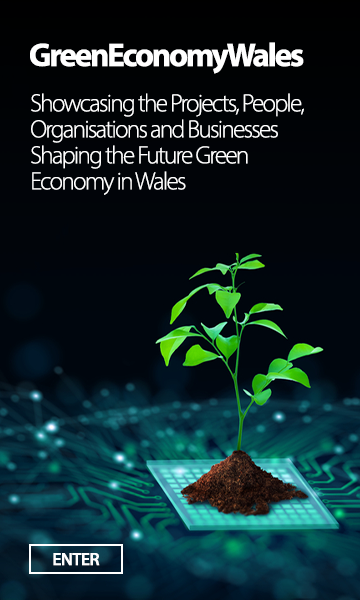A collaboration between researchers at the Energy Safety Research Institute at Swansea University and cement producer Hanson UK has seen the installation of a new green hydrogen demonstration unit at the company’s Regen GGBS plant in Port Talbot, South Wales.
The demonstration unit, which generates green hydrogen through renewable energy, has been developed as part of the £9.2m Reducing Industrial Carbon Emissions (RICE) project which has been part-funded by the European Regional Development Fund through the Welsh Government, and is aimed at the deployment of industrial scale demonstrations of new technology.
Cement production is energy intensive due to the high temperatures required to produce clinker – the main component of Portland cement. Hanson’s Port Talbot plant produces Regen GGBS, ground granulated blast furnace slag, which is used as a replacement for up to 80 per cent of the cement in concrete. Although Regen is also an energy intensive product, using large amounts of natural gas and electricity, its carbon footprint is about one tenth of Portland cement. The aim of the demonstration unit is to replace some of the natural gas used at the plant with green hydrogen, which is considered a clean source of energy as it only emits water when burned, reducing CO2 emissions from the burner and reducing the carbon footprint of Regen even further.
The demonstration unit is producing hydrogen at Hanson’s Port Talbot plant through the process of electrolysis. Renewable energy is generated through wind and solar on site and the energy is directed into the electrolyser or water splitting device. The electrolyser can efficiently utilise this energy to split water into hydrogen and oxygen. The hydrogen is then passed into the burner to enrich the combustion mixture, saving carbon emissions from the burning of natural gas.
Leading this work is Dr Charlie Dunnill and his team who are based at the Energy Safety Research Institute.
“It has been a pleasure to work with the staff at Hanson and is amazing to see technology from our labs interacting in real time with local industry, actually producing hydrogen that can be burned in exchange for natural gas to lower their green-house emissions. Cement manufacture is one of the most energy and carbon intensive industries and therefore a perfect place to start making impacts in carbon reduction.”
It’s estimated that cement is the source of just under 1.5 per cent of UK CO2 emissions. With demand for cement and cement replacement products predicted to increase by a quarter by 2030, researchers and industry are working hard to reduce the level of carbon emissions associated with production.
Data from the units installed at Hanson’s Port Talbot plant will be monitored for a period of time in order to achieve maximum efficiencies and also highlight any potential enhancements. Having access to facilities to scale up the demonstration units is a vital part of the project, and Hanson UK has been an enthusiastic participant from an early stage.
“As a company we take our commitment to sustainability very seriously,” said Marian Garfield, head of sustainability at Hanson UK. “In the UK, we have already achieved a 30 per cent reduction in CO2 emissions since 1990 across the business and have set an ambitious new target of a 50 per cent reduction by 2030 from the same baseline.
“We are constantly looking to improve energy efficiency and carbon reduction at our cement and Regen plants, so we are delighted to be involved with this innovative research project.”
Following the successful deployment of the unit at Hanson’s Regen GGBS plant, further units can now be deployed at additional sites. The team is also in discussions with other heavy industries on the potential to install units at other sites.
Professor Andrew Barron the Principle Investigator of the RICE project summarized the achievement, “as we head towards the UK’s 2050 goal of net zero it is important to give industry scalable pathways to reach that end. The RICE project is all about doing this, since there is no longer time for more research projects, it is time for action”.
Lesley Griffiths, the Minister for Environment, Energy and Rural Affairs said:
“I am very pleased to see the ambition and ingenuity on display in the work undertaken by Hanson UK and RICE at the company’s Port Talbot plant.
“It is through such innovative and collaborative efforts that we can work with high-emitting industries to find ways to end their contribution to global warming – not just here in Wales but across the world. Wales was at the leading edge of the first industrial revolution and through projects like these we can play a leading role in the green industrial revolution taking place today.”
More information is available at https://www.rice.cymru/hydrogen-hanson





















